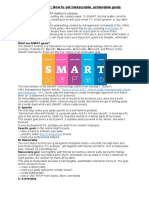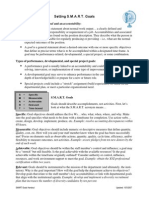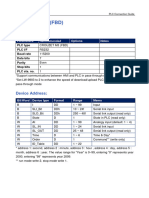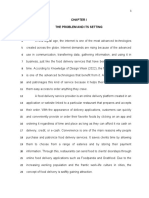0% found this document useful (0 votes)
18 views8 pagesSMART Goals
SMART goals are a strategic framework for setting and achieving business objectives by ensuring they are Specific, Measurable, Achievable, Relevant, and Time-based. This method enhances clarity, motivation, and focus, making it easier to identify necessary steps and resources for success. While effective for smaller, short-term goals, SMART may be less suitable for complex, long-term objectives due to its simplicity.
Uploaded by
brant.whittakerCopyright
© © All Rights Reserved
We take content rights seriously. If you suspect this is your content, claim it here.
Available Formats
Download as DOCX, PDF, TXT or read online on Scribd
0% found this document useful (0 votes)
18 views8 pagesSMART Goals
SMART goals are a strategic framework for setting and achieving business objectives by ensuring they are Specific, Measurable, Achievable, Relevant, and Time-based. This method enhances clarity, motivation, and focus, making it easier to identify necessary steps and resources for success. While effective for smaller, short-term goals, SMART may be less suitable for complex, long-term objectives due to its simplicity.
Uploaded by
brant.whittakerCopyright
© © All Rights Reserved
We take content rights seriously. If you suspect this is your content, claim it here.
Available Formats
Download as DOCX, PDF, TXT or read online on Scribd
/ 8




















































































